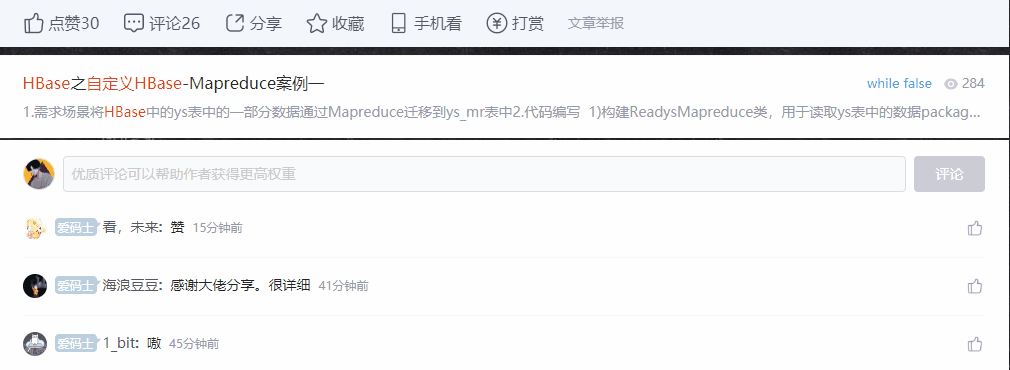大家好,我是不温卜火,是一名计算机学院大数据专业大二的学生,昵称来源于成语—
不温不火,本意是希望自己性情温和。作为一名互联网行业的小白,博主写博客一方面是为了记录自己的学习过程,另一方面是总结自己所犯的错误希望能够帮助到很多和自己一样处于起步阶段的萌新。但由于水平有限,博客中难免会有一些错误出现,有纰漏之处恳请各位大佬不吝赐教!暂时只有csdn这一个平台,博客主页:https://buwenbuhuo.blog.csdn.net/
此篇为大家带来的是简单一文了解Spark核心概念。

目录

一. 站在集群角度
1.1 Master
Spark 特有资源调度系统的 Leader。掌管着整个集群的资源信息,类似于 Yarn 框架中的 ResourceManager,主要功能:
- 监听 Worker,看 Worker 是否正常工作;
- Master 对 Worker、Application 等的管理(接收 Worker 的注册并管理所有的Worker,接收 Client 提交的 Application,调度等待的 Application 并向Worker 提交)。
1.2 Worker
Spark 特有资源调度系统的 Slave,有多个。每个 Slave 掌管着所在节点的资源信息,类似于 Yarn 框架中的 NodeManager,主要功能:
- 通过 RegisterWorker 注册到 Master;
- 定时发送心跳给 Master;
- 根据 Master 发送的 Application 配置进程环境,并启动 ExecutorBackend(执行 Task 所需的临时进程)
二. 站在应用程序角度
2.1 driver program(驱动程序)
每个 Spark 应用程序都包含一个驱动程序, 驱动程序负责把并行操作发布到集群上.
驱动程序包含 Spark 应用程序中的主函数, 定义了分布式数据集以应用在集群中.
在前面的wordcount案例集中, spark-shell 就是我们的驱动程序, 所以我们可以在其中键入我们任何想要的操作, 然后由他负责发布.
驱动程序通过SparkContext对象来访问 Spark, SparkContext对象相当于一个到 Spark 集群的连接.
在 spark-shell 中, 会自动创建一个SparkContext对象, 并把这个对象命名为sc.

2.2 executor(执行器)
SparkContext对象一旦成功连接到集群管理器, 就可以获取到集群中每个节点上的执行器(executor).
执行器是一个进程(进程名: ExecutorBackend, 运行在 Worker 节点上), 用来执行计算和为应用程序存储数据.
然后, Spark 会发送应用程序代码(比如:jar包)到每个执行器. 最后, SparkContext对象发送任务到执行器开始执行程序.

2.3 RDDs(Resilient Distributed Dataset) 弹性分布式数据集
一旦拥有了SparkContext对象, 就可以使用它来创建 RDD 了. 在前面的例子中, 我们调用sc.textFile(…)来创建了一个 RDD, 表示文件中的每一行文本. 我们可以对这些文本行运行各种各样的操作.
2.4 cluster managers(集群管理器)
为了在一个 Spark 集群上运行计算, SparkContext对象可以连接到几种集群管理器(Spark’s own standalone cluster manager, Mesos or YARN).
集群管理器负责跨应用程序分配资源.
三. 专业术语列表
| Term | Meaning |
|---|---|
| Application | User program built on Spark. Consists of a driver program and executors on the cluster. (构建于 Spark 之上的应用程序. 包含驱动程序和运行在集群上的执行器) |
| Application jar | A jar containing the user’s Spark application. In some cases users will want to create an “uber jar” containing their application along with its dependencies. The user’s jar should never include Hadoop or Spark libraries, however, these will be added at runtime. |
| Driver program | The thread running the main() function of the application and creating the SparkContext |
| Cluster manager | An external service for acquiring resources on the cluster (e.g. standalone manager, Mesos, YARN) |
| Deploy mode | Distinguishes where the driver process runs. In “cluster” mode, the framework launches the driver inside of the cluster. In “client” mode, the submitter launches the driver outside of the cluster. |
| Worker node | Any node that can run application code in the cluster |
| Executor | A process launched for an application on a worker node, that runs tasks and keeps data in memory or disk storage across them. Each application has its own executors. |
| Task | A unit of work that will be sent to one executor |
| Job | A parallel computation consisting of multiple tasks that gets spawned in response to a Spark action (e.g. save, collect); you’ll see this term used in the driver’s logs. |
| Stage | Each job gets divided into smaller sets of tasks called stages that depend on each other (similar to the map and reduce stages in MapReduce); you’ll see this term used in the driver’s logs. |
本次的分享就到这里了,

好书不厌读百回,熟读课思子自知。而我想要成为全场最靓的仔,就必须坚持通过学习来获取更多知识,用知识改变命运,用博客见证成长,用行动证明我在努力。
如果我的博客对你有帮助、如果你喜欢我的博客内容,请“点赞” “评论”“收藏”一键三连哦!听说点赞的人运气不会太差,每一天都会元气满满呦!如果实在要白嫖的话,那祝你开心每一天,欢迎常来我博客看看。
码字不易,大家的支持就是我坚持下去的动力。点赞后不要忘了关注我哦!

